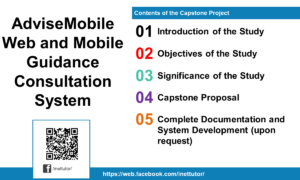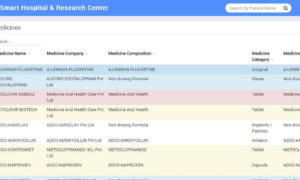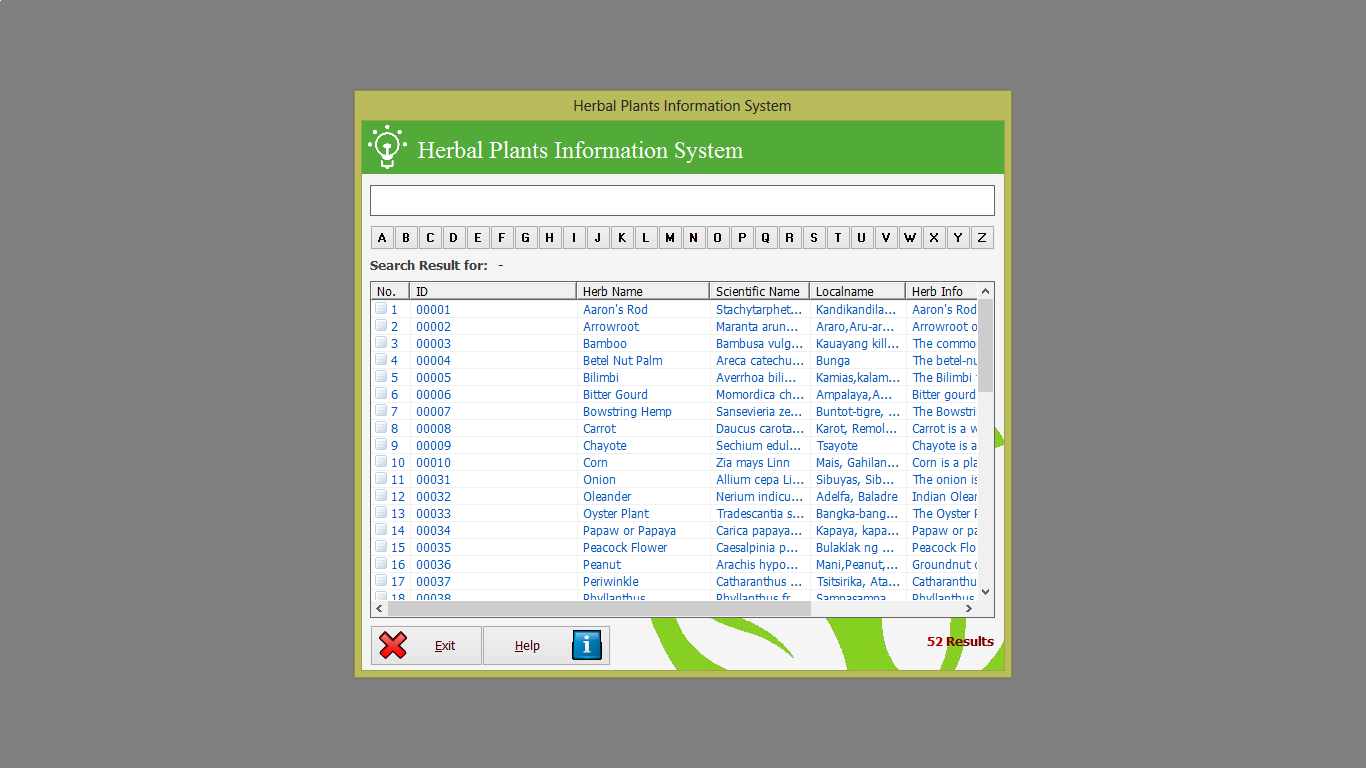Citizen Feedback and Rating System for Public Services: Building Transparent and Accountable Governance Through Technology
Table of Contents
- Citizen Feedback and Rating System for Public Services: Building Transparent and Accountable Governance Through Technology
- Introduction
- Project Overview
- Objectives of the System
- Technology Stack
- Key Features of the System
- 1. User Registration and Authentication
- 2. Service Rating Dashboard
- 3. Feedback Management Panel
- 4. Sentiment Analysis Module
- 5. Data Visualization and Reports
- 6. Transparency Portal
- 7. Notification and Acknowledgment System
- 8. Admin Analytics Dashboard
- 9. Mobile-Friendly Interface
- 10. Multi-language Support
- 6. Workflow of the System
- Benefits and Impact
- 1. Strengthens Citizen Engagement
- 2. Improves Service Delivery
- 3. Encourages Transparency
- 4. Enhances Policy Decision-Making
- 5. Promotes Healthy Competition
- 6. Boosts Public Trust
- Potential Extensions
- Summary and Conclusion
Introduction
In today’s digital era, public trust in government institutions depends largely on transparency, accountability, and citizen engagement. Traditional feedback systems — such as manual surveys, hotline calls, or paper-based forms — often fail to capture real-time sentiment or actionable insights from the public.
To bridge this gap, many governments around the world are turning to citizen feedback and rating systems, an innovation that allows people to evaluate public services directly through digital platforms. These systems empower citizens to voice their opinions, rate service quality, and suggest improvements in a structured, data-driven manner.
This blog post explores the Citizen Feedback and Rating System for Public Services — a technology-driven initiative designed to enhance public sector performance, transparency, and responsiveness. It also covers its objectives, key features, architecture, and benefits, along with the recommended technology stack for developers and IT professionals aiming to build similar civic tech projects.
Project Overview
A Citizen Feedback and Rating System is a digital platform that enables citizens to provide evaluations and feedback about various government services — such as business permit processing, healthcare, public transportation, or community assistance.
The system functions as a bridge between citizens and government administrators, collecting real-time data to assess satisfaction levels and identify problem areas in service delivery.
Imagine a web or mobile platform where a citizen can log in, choose a government office or service (e.g., “City Hall – Business Permit Division”), give a star rating (1 to 5), and submit a comment describing their experience. These inputs are then analyzed and presented in dashboards accessible to administrators, helping them make informed decisions and improve public service performance.
This system supports the broader vision of e-governance — the use of information and communication technologies (ICT) to make public administration more efficient, transparent, and citizen-focused.
Objectives of the System
The Citizen Feedback and Rating System is designed with several key objectives in mind:
- Enhance Transparency and Accountability:
Allow citizens to monitor and evaluate public service performance in real-time, ensuring that public servants are accountable for their actions. - Promote Participatory Governance:
Encourage citizens to be active participants in shaping government services rather than passive recipients. - Improve Service Quality Through Data Analytics:
Use feedback data and sentiment analysis to identify weaknesses, bottlenecks, and areas for improvement. - Foster Trust Between Citizens and Government:
Build confidence in public institutions through open data and transparent reporting. - Enable Data-Driven Decision Making:
Equip government agencies with actionable insights to redesign workflows, improve efficiency, and boost citizen satisfaction.
Technology Stack
Building a modern and scalable citizen feedback system requires a flexible, secure, and user-friendly technology stack. Below is a recommended configuration:
| Layer | Suggested Technologies |
|---|---|
| Frontend | React.js / Vue.js / Bootstrap 5 / Tailwind CSS |
| Backend | Node.js / PHP (Laravel) / Python (Django or Flask) |
| Database | MySQL / PostgreSQL / MongoDB |
| AI & NLP | OpenAI API / Hugging Face Transformers (for sentiment analysis) |
| API Integrations | Google Maps API (for location tagging), Twilio or SendGrid (for SMS/Email alerts) |
| Authentication | JWT / OAuth 2.0 / Firebase Auth |
| Visualization | Chart.js / D3.js / Plotly |
| Hosting & Deployment | AWS / DigitalOcean / Firebase / Docker Containers |
This tech stack ensures scalability, real-time data visualization, and smooth integration with government data systems and public portals.
Key Features of the System
Here are the essential modules and features that make the Citizen Feedback and Rating System a powerful governance tool:
1. User Registration and Authentication
Citizens can sign up using their email, mobile number, or government ID. The system ensures secure logins and identity verification to prevent spam or fake feedback submissions.
2. Service Rating Dashboard
Users can browse a list of government services or offices and provide star ratings (1 to 5) along with written feedback. Ratings can be categorized by attributes such as:
- Timeliness of service
- Courtesy of staff
- Efficiency of process
- Overall satisfaction
3. Feedback Management Panel
A backend dashboard for administrators where feedback entries are reviewed, categorized, and flagged for follow-up. It allows sorting feedback by department, date, or sentiment type.
4. Sentiment Analysis Module
Using AI-powered Natural Language Processing (NLP), the system can automatically classify feedback as positive, negative, or neutral. This gives government offices a quick overview of public mood and service quality.
5. Data Visualization and Reports
Interactive dashboards display average ratings, satisfaction trends, and common complaints. Color-coded graphs, pie charts, and heatmaps help decision-makers pinpoint issues geographically or departmentally.
6. Transparency Portal
A public-facing page that displays overall ratings and recent feedback summaries for each office, encouraging accountability and motivating service improvement.
7. Notification and Acknowledgment System
When citizens submit feedback, they receive an acknowledgment message via email or SMS, confirming that their opinion has been recorded and is under review.
8. Admin Analytics Dashboard
Provides administrators with advanced analytics — such as satisfaction score trends, most improved offices, and performance ranking across departments.
9. Mobile-Friendly Interface
Designed for accessibility, the system can be accessed via any smartphone or tablet, encouraging wider participation from citizens.
10. Multi-language Support
For diverse communities, the system can support multiple local languages, making it inclusive and more effective for broad civic engagement.
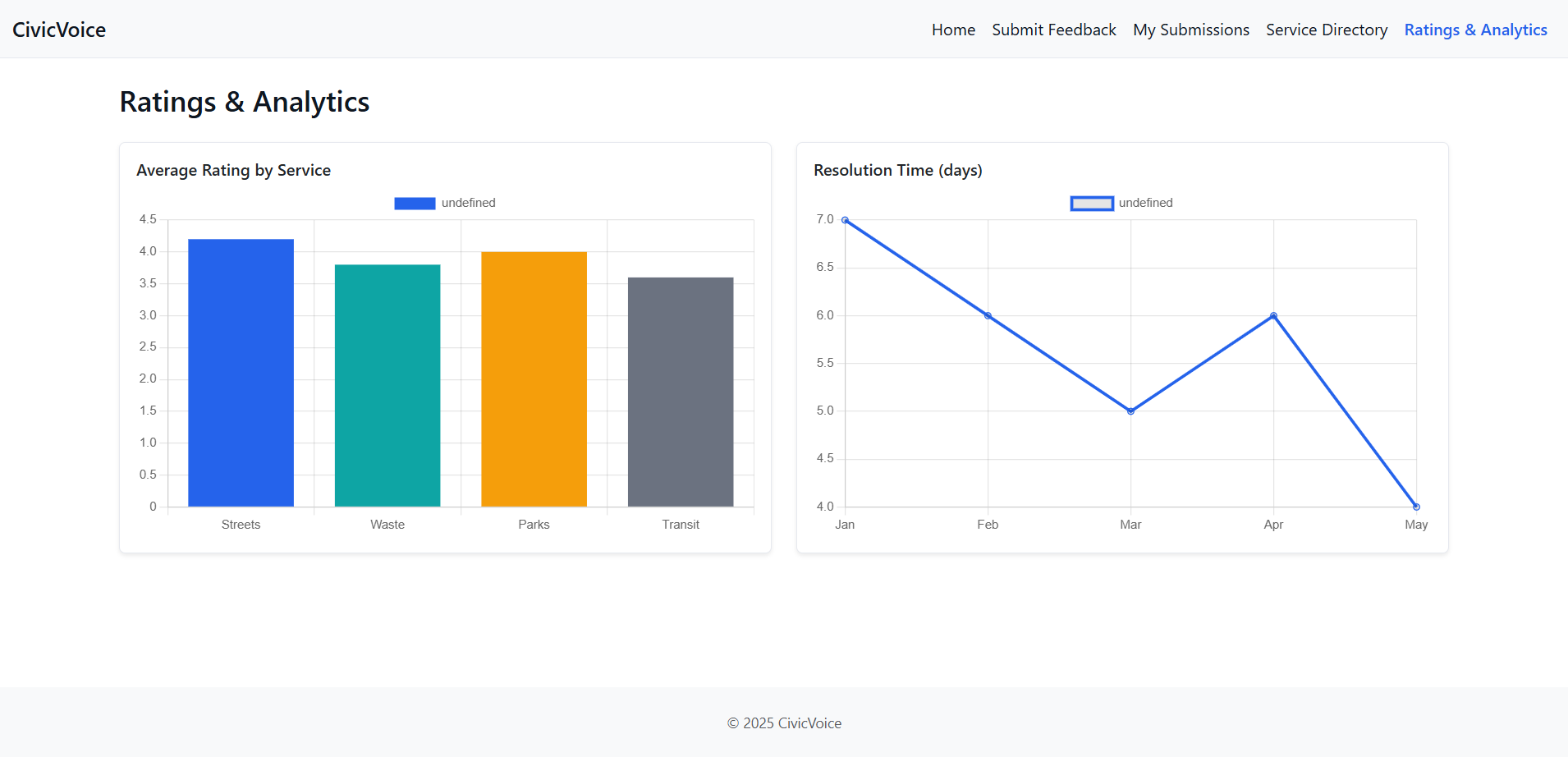
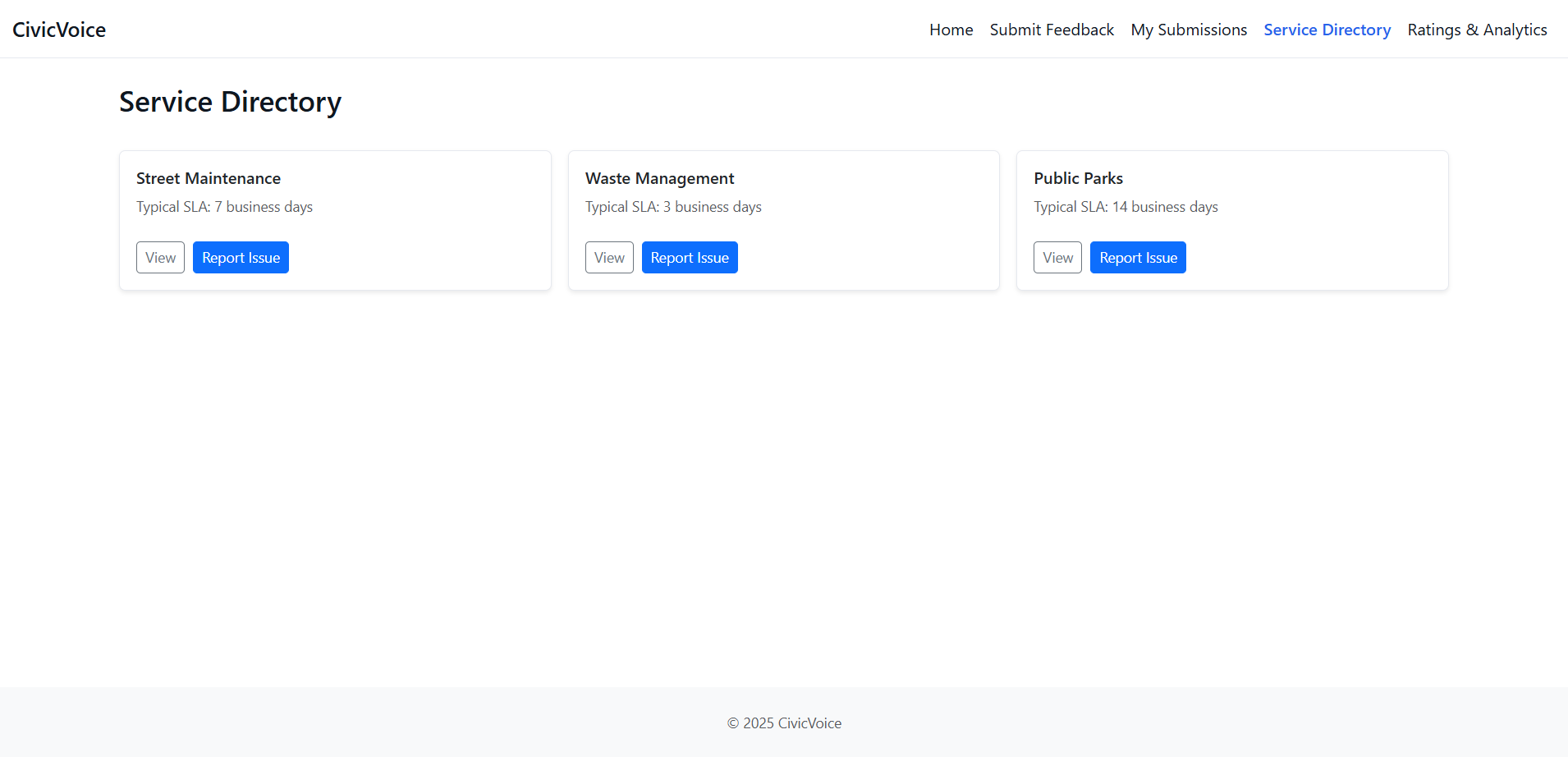
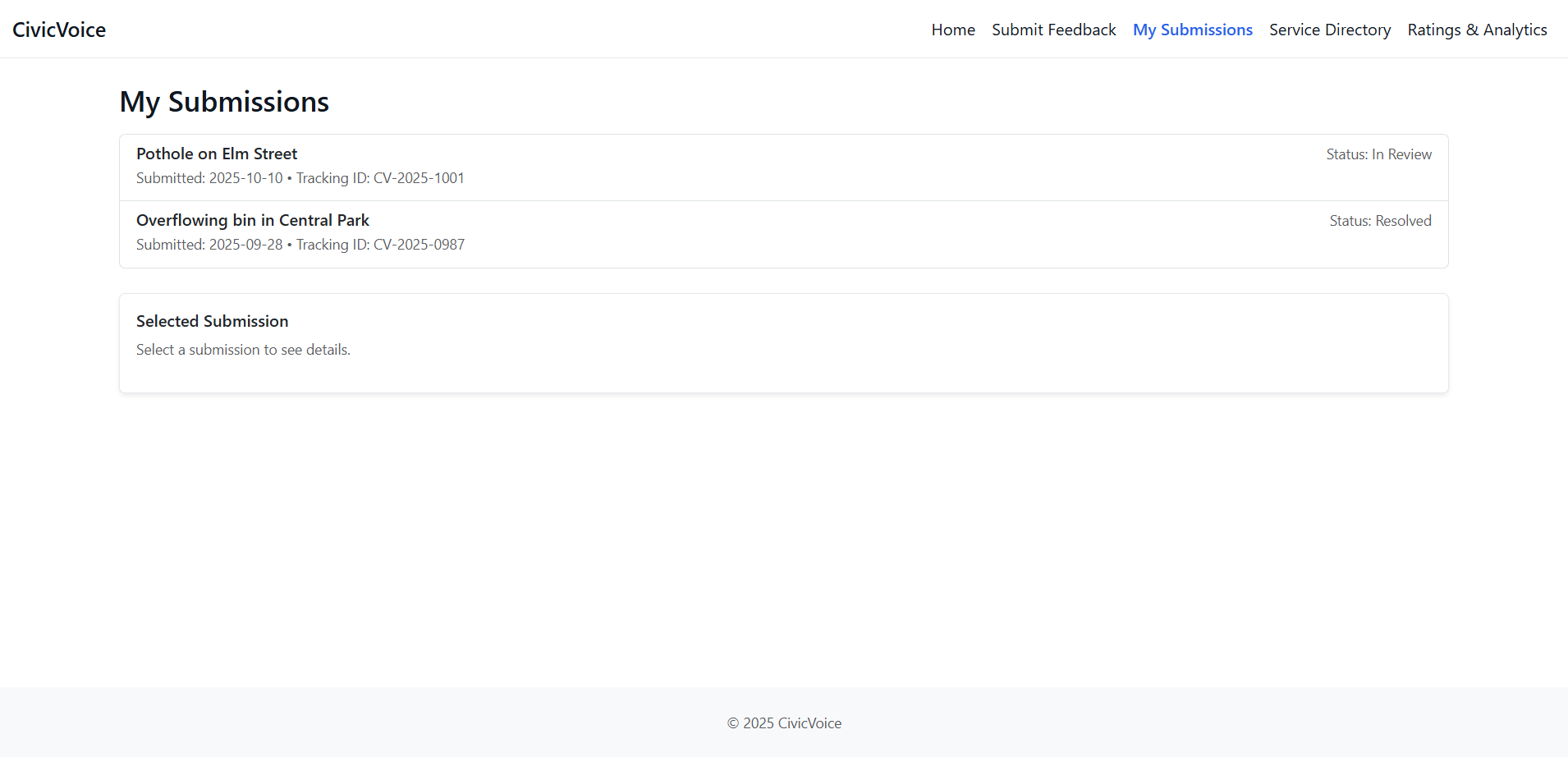
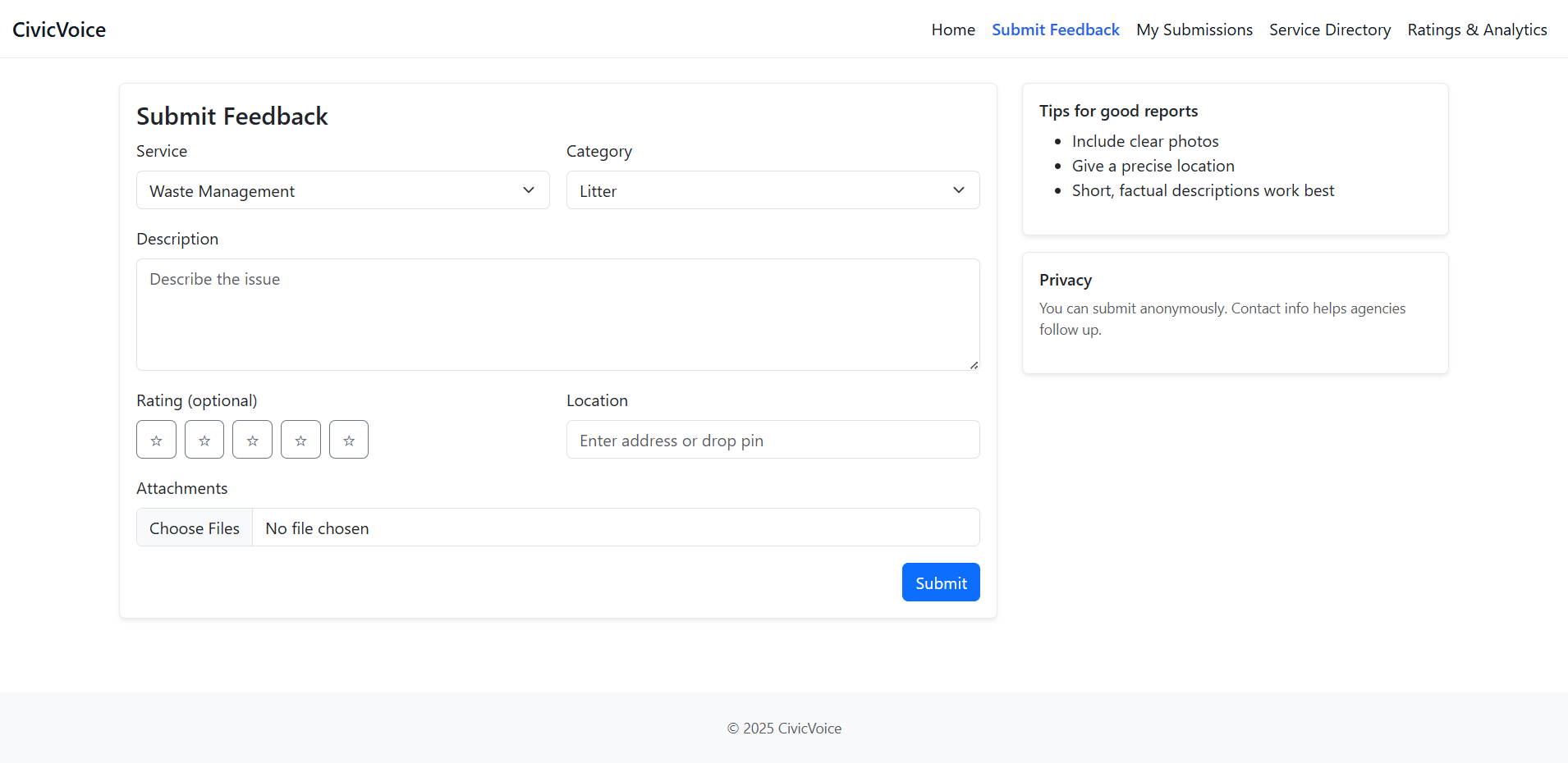
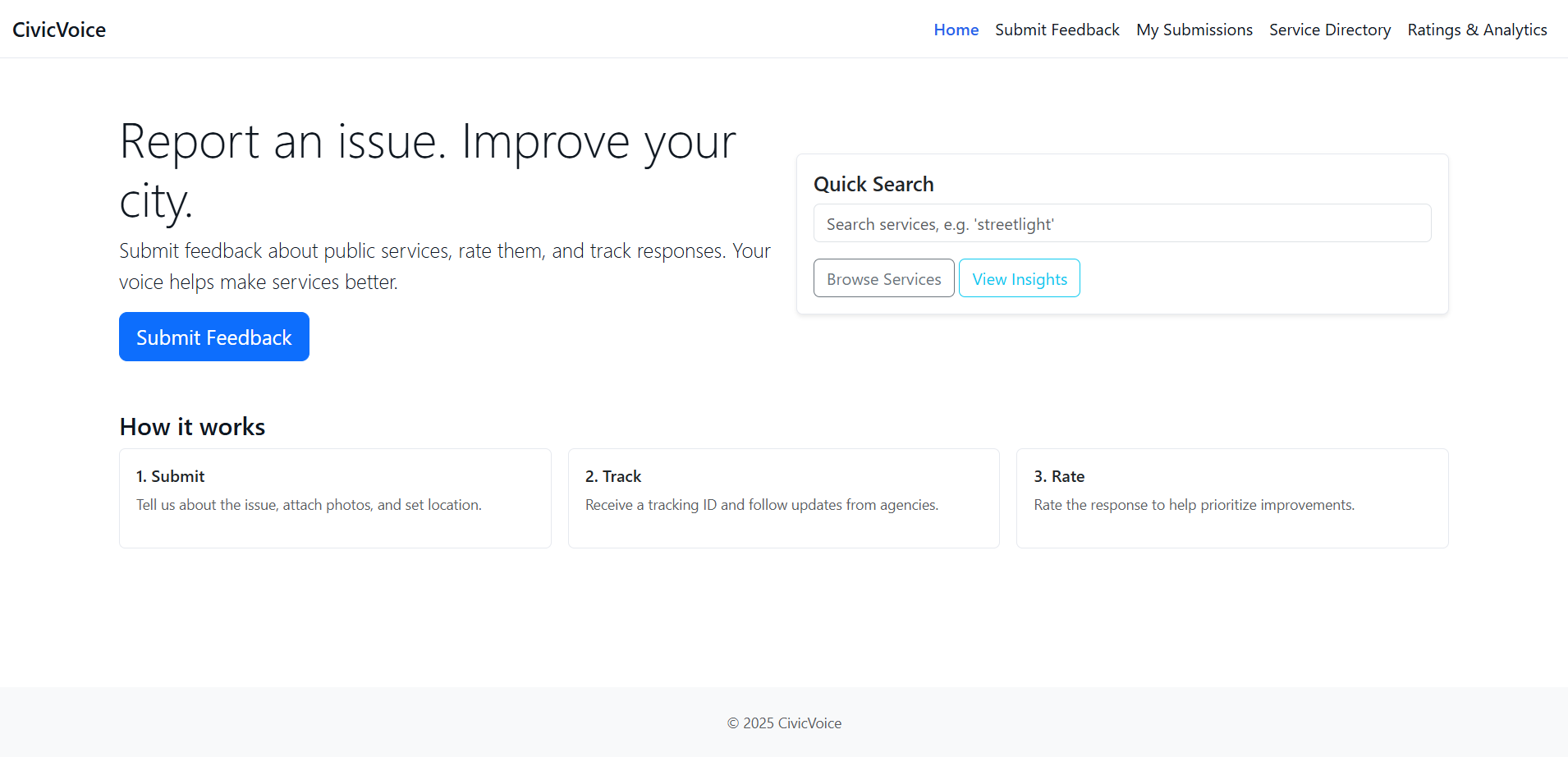
6. Workflow of the System
The workflow of the Citizen Feedback and Rating System typically follows these steps:
- Citizen Login: A registered citizen logs into the platform using secure authentication.
- Feedback Submission: The user selects a public service, rates it, and adds optional comments or suggestions.
- Data Processing: The system stores the feedback in the database and uses NLP to analyze sentiment.
- Admin Review: Government officials review the feedback in the dashboard, categorize it, and plan actions if needed.
- Report Generation: Analytics tools visualize satisfaction levels and performance metrics.
- Public Transparency Update: Aggregated data is displayed on the public portal for everyone to view.
This process ensures a continuous feedback loop between citizens and government institutions.
Benefits and Impact
A well-implemented Citizen Feedback and Rating System provides long-term benefits for governance, service quality, and community trust.
1. Strengthens Citizen Engagement
Citizens gain a direct communication channel with government offices, making them active contributors to governance.
2. Improves Service Delivery
Departments can identify weaknesses quickly and implement corrective actions based on data insights.
3. Encourages Transparency
Public access to performance data builds trust and reduces corruption by making service efficiency visible.
4. Enhances Policy Decision-Making
Data collected from the system can help in designing evidence-based public policies and targeted development programs.
5. Promotes Healthy Competition
Government offices are motivated to improve their ratings, fostering healthy competition and better service culture.
6. Boosts Public Trust
When citizens see their feedback acknowledged and acted upon, it fosters trust and civic pride.
Potential Extensions
Developers and local governments can extend the functionality of the system in several innovative ways:
- Social Media Integration:
Allow citizens to submit feedback via official social media pages or chatbots, which then sync automatically with the central database. - Mobile App Version:
Create a standalone mobile app with push notifications and offline submission options for rural areas with limited connectivity. - AI Trend Detection:
Implement AI models that detect recurring issues (e.g., “slow processing times”) and generate automated reports for agency heads. - Gamification:
Introduce badges or reward points for citizens who actively participate in feedback collection to increase engagement. - Integration with National ID Systems:
Link citizen profiles to verified IDs for more secure and credible feedback submission.
Summary and Conclusion
The Citizen Feedback and Rating System for Public Services is more than just a digital survey tool — it’s a cornerstone of participatory governance. By leveraging technologies such as AI, NLP, and data visualization, governments can transform public sentiment into actionable insights that drive continuous improvement.
Through real-time analytics, transparent dashboards, and open data initiatives, this system ensures that citizen voices are not only heard but acted upon. It fosters trust, accountability, and efficiency, redefining how governments interact with their people in the 21st century.
As nations embrace digital transformation, systems like these will play a crucial role in shaping responsive, data-driven, and citizen-centered governance.
You may visit our Facebook page for more information, inquiries, and comments. Please subscribe also to our YouTube Channel to receive free capstone projects resources and computer programming tutorials.
Hire our team to do the project.
